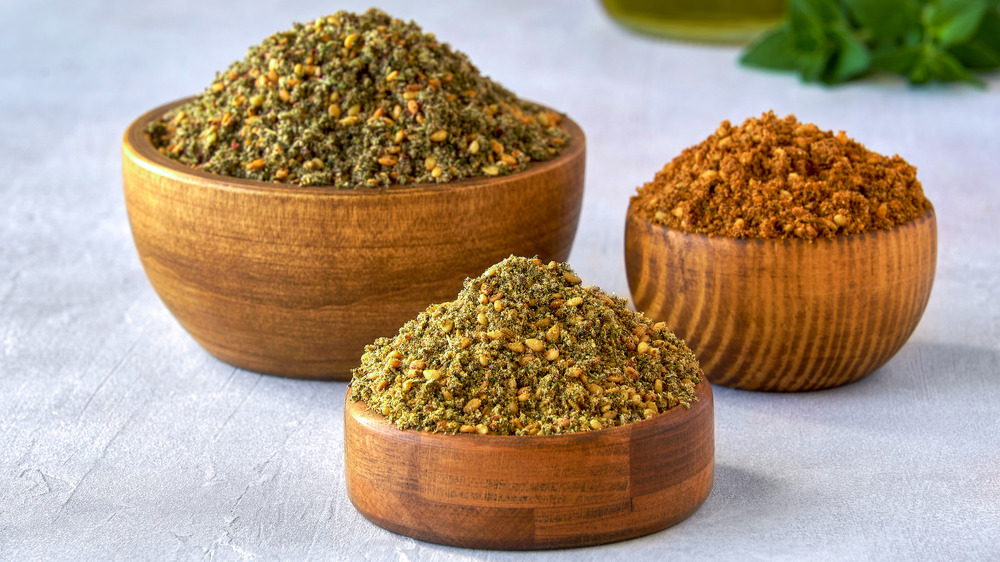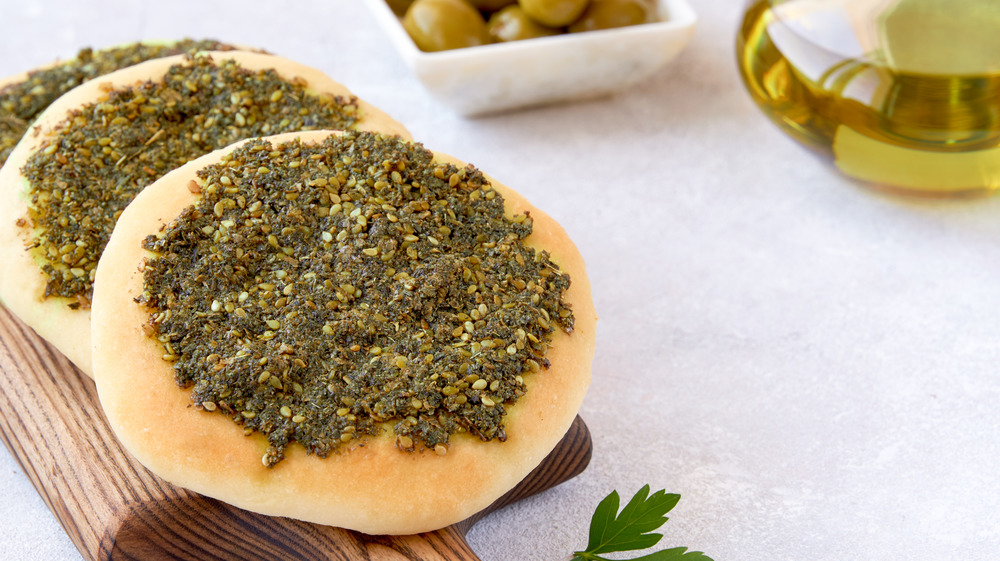What Is Za'atar And How Do You Use It?
In most kitchens, there are normally a few spices and seasoning blends that have become staples. Things like garlic, paprika, salt, and pepper have become mainstay ingredients that all chefs and home cooks alike keep neatly stocked in their pantries. Depending on your ethnic background or how adventurous you are when it comes to food, you've probably heard of za'atar. There are few spices in the world that have the somewhat epic history and cult following that the Middle Eastern spice blend za'atar (pronounced Zaah-tar, according to The Mediterranean Dish) has. This spice blend is said to be incredibly versatile and can seamlessly be incorporated into any dish you are making. This simple mix of dried oregano, thyme, marjoram, sumac, and toasted sesame seeds is said to give every dish it is added to the perfect earthy, yet lively, flavor profile, Bon Appetit cites. End result? Something that is so astonishingly distinctive, delectable, and enjoyable that you'll be grabbing za'atar every time you're in the kitchen cooking up a storm.
Za'atar was thought to be brain food
My Recipes notes that za'atar is only now getting its due recognition in spice racks everywhere. But in terms of history and longevity, za'atar can be traced back to the 12th and 13th centuries (via NPR). Za'atar can easily be dated to biblical times, and even further back to ancient Egypt, My Recipes explains, despite scholars not being able to pinpoint the exact time it was created. Because of this immensely long cooking history, za'atar blends don't have a set recipe, as many places that use it have developed their own names and recipes for this spice.
What, exactly, makes it a brain food? Za'atar calls for thyme, sumac, and oregano, herbs that are rich in things like flavonoids, thymol, and carvacrol, NPR reports. Spanish Jewish philosopher, Maimonides, was even reported to recommend it as medicine to his patients. Another positive about za'atar is that it follows in the footsteps of Frank's Red Hot Sauce and goes well on everything. The Spruce Eats asserts that you can use it on meat, seafood, roasted vegetables, dips, salad dressings, or even on a flatbread drizzled with extra virgin olive oil.

